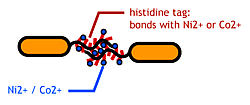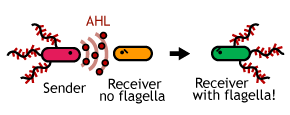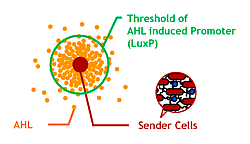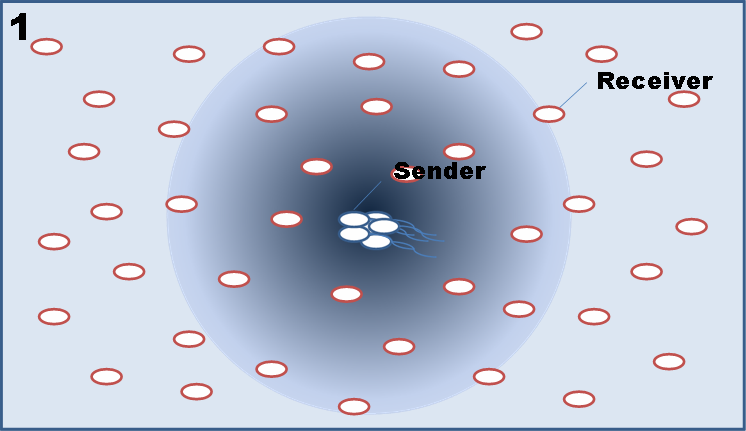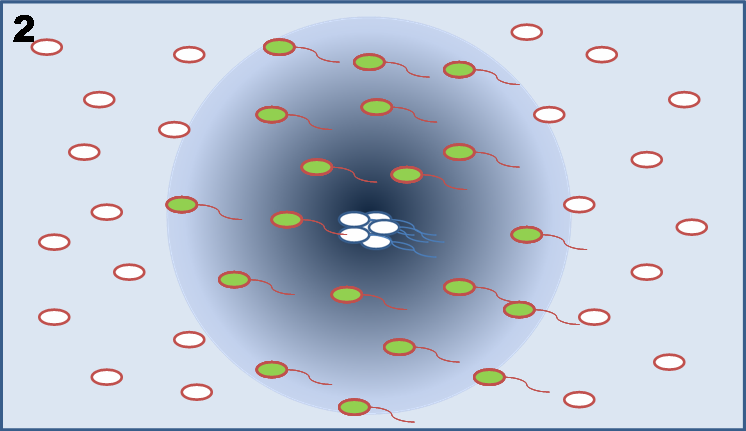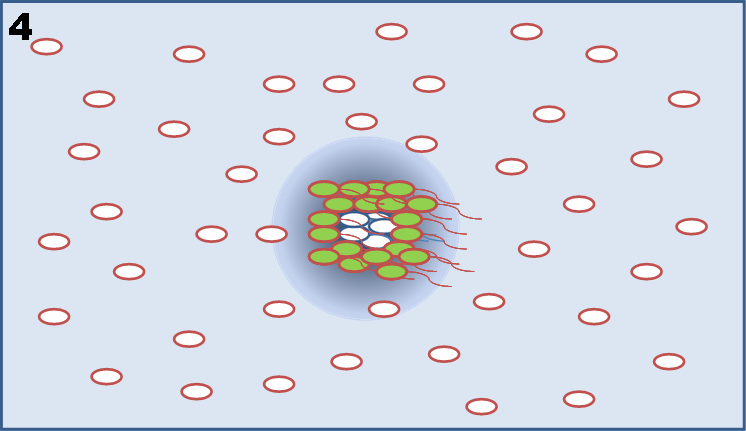Chiba/Project Design
From 2007.igem.org
|
Introduction | Project Design ( 1.Sticky Hands | 2.Communication | 3.Size Control ) | Making Marimos | Our Goal || Team Members | メンバ連絡簿 |
Project Design
Concept

(photo taken from Agriculture, Forestry and Fishes Technical Information Society, Japan, http://www.afftis.or.jp/index.html)
We aimed to make a spherical gathering of bacteria such like marimo by ordering bacteria go get together and stick to each other.
What our system requires
1.Sticky TagMake a His-tagged Flagella. We aimed to stick bacteria by displaying histidines (which bonds with metal ions) on the flagellar fillament. |
2.CommunicationMake a Bacterial Communication. We make 2 types of cell having different gene circuit. Senders sticking each other in advance send a signal to receivers and receivers grow sticky hands. |
3.Size ControlMake an AHL concentration gradient for quorum sensing. |
How Our System Works
- Senders stick to each other by way of metal ions using flagella displaying histidine tags. This becomes the core of Marimo. They also produce AHL to call receiver cells.
- Receivers express his/flagella and GFP in high [AHL]; only when they get close to the senders (core).
- Receivers stick to the core (the clustered senders) by way of metal ions.... one after another.
- This way, cluster and grow like a snowball. At the same time, receivers degrade AHL and thus limit the space where AHL reaches. By controlling the rate of AHL degradation, one can define the size of bacterial culster, MARIMO.


